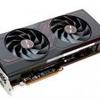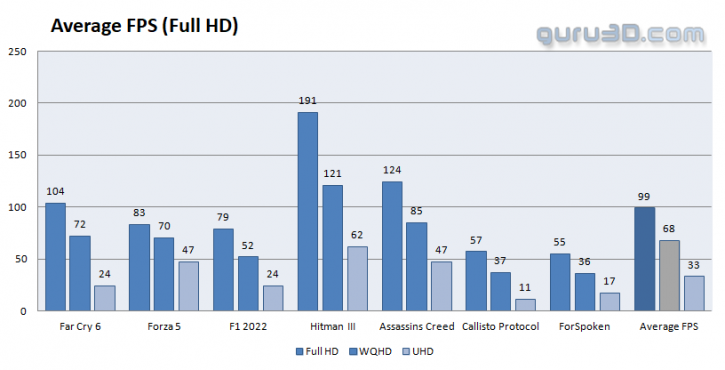Final words and conclusion
Final words
Both the Radeon RX 7700 XT and 7800 XT graphics cards are recent introductions specifically for my favourite monitor resolution,the WQHD monitor range. Both cards feature a notable shader count and VRAM buffers when evaluating their specifications. They are strategically positioned between the GeForce 4060 Ti and RTX 4070, aiming to blend performance and cost-effectiveness. While I do like the 7800 XT a notch better, the 7700 XT surely is no slough. I do feel this card should be priced at $349-389.The RX 7700 XT series does not present groundbreaking technological advancements but brings incremental improvements in raw performance. What I am saying, here is AMD is still a step behind in Raytracing performance and efficient adaptive supersampling techniques with the help of an AI assist. However, most people still do not care about the latter one and as such crave faster shader performance. And here these graphics cards deliver. Notable features include AV1 compatibility, incorporation of the rDNA3 architecture, and updated monitor connectors, all of which enhance the overall user experience but really might not be compelling enough to switch away from NVIDIA. In terms of performance, the RX 7700 XT closely mirrors its 6800 predecessors within this competitive market segment. Alternatives might offer distinct benefits, so potential buyers should assess their options carefully. The RX 7700 XT model comes with 12GB of graphics memory on a more restricted 192-bit memory interface, potentially making it an appealing choice for those emphasizing performance relative to cost. On the other hand, the 7800 XT 16GB 256-bit provides a slightly higher performance level but demands more financial and energy budget and your money, passing 500 Euros.
Performance
The RX 7700 XT graphics cards offer proper rendering quality and capability suitable for mainstream to high-end gaming. Although it doesn't exhibit huge progression from its predecessors (6800), it demonstrates enhanced raytracing performance. Designed primarily for gamers who prioritize a new monitor, the RX 7700 XT and 7800 XT also support QHD monitor resolutions. Within the RX 7000 series, the upgraded rasterizer engine overcomes former performance constraints, highlighting notable raw shader engine capabilities. While NVIDIA's Raytracing and DLSS3 technologies surpass AMD's FSR2 and upcoming FSR3, the RX 7700/7800 XT's performance with FSR2 is still noteworthy, and enabling FSR is recommended. However, based on frametime results, AMD appears to have potential improvements to make at the driver level, as some stuttering was observed.
Cooling & noise levels
Our test shows that gaming will get you an approximate volume level of 33-34 decibels, rendering it inaudible (we do need to mention that this is a Sapphire Pulse model as AMD did not submit a reference sample). Moreover, the graphics card temperature is slightly above 60 degrees Celsius. Furthermore, our utilization of FLIR imaging failed to unveil any worrisome observations.
Energy
Please keep in mind that the Radeon RX 7700 XT is positioned as a gaming product intended for the mainstream market and it consumes a fair amount of energy. When operating at maximum load, the reference edition draws approximately 235 Watts on average (total board power or TBP). This power consumption is directly linked to the amount of heat emitted by the GPU, which is situated within an enclosed casing. Looking at the perf per watt values, these are very average.
Coil whine
Every graphics card will inevitably produce a discernible buzzing sound known as coil whine when operating at high FPS. Is it bothersome? It becomes noticeable once you push the frame rates to extremely high levels. In a closed computer case, this noise tends to recede into the background. However, when the chassis is open, the coil whine or squeal becomes audible. Almost all graphics cards exhibit this phenomenon to some extent, particularly when operating at higher frame rates. Despite its presence, we have not noticed it enough to be a significant inconvenience.
Pricing
The reference edition comes with a price tag of USD 449, which still can be considered substantial for a device primarily used for playing PC games in Full HD resolution. In the European Union, you must convert the currency and factor in the value-added tax, bringing the total to around 510-525 euros. Moreover, advanced AIB cards will be even more expensive. Based on MSRP this card, however does offer the best bang for buck. Also, let me throw in this: the card is priced pretty similarly to the 6800 (XT) and performs in the same bracket.
Tweaking
The card can be effectively tweaked with ease; however, AMD applied maximum values. One beneficial feature is the power limiter, allowing for a wattage increase of up to +15%. This serves as the initial and fastest option for tweaking. By utilizing this option, you can achieve enhanced performance while staying within the card's default power allocation. Additionally, the boost clock frequency can be set at a suitable 2750 MHz, although it may dynamically fluctuate to approximately 2800 MHz due to variations in frequencies across different game titles. Furthermore, the memory can be optimized to operate at around 20 Gbps. When all these adjustments are combined, they result in approximately 5% additional performance gains in demanding GPU scenarios, measured relative to the baseline performance.
Conclusion
Within the WHQD category, the 7700 XT emerges as a potential option. The decision ultimately rests on individual budgetary constraints and specific requirements. The Radeon RX 7700 XT, with its base price of $449, offers good performance however at high cost. The 7800 XT, priced slightly higher at $499, presents itself as a strong contender. Ideally, a price point of around $369 for this 7700 XT 12GB card would make it an excellent purchase. Given the $449 tag, some might lean towards the 7800 XT, potentially aligning with AMD's strategic positioning. Th reality is that these card sit in the 6800(XT), and when not GPU bound the 6900 series performance level. The wait for these new AMD products has been notably extended, during which NVIDIA has effectively occupied many market niches. AMD still lags behind in terms of Raytracing performance and AI tricks like DLSS 2/3, not to mention the latest 3.5 versions. While both brands have their strengths, AMD's incorporation of 48MB of L3 cache has addressed the memory bandwidth constraints (192-bit), ensuring effective performance for up to 2560x1440 resolutions. Still, the L3 cache's role seems more like a temporary solution, and it might not navigate challenges from limited memory interfaces in the future. In terms of raytracing, AMD may not match its competitors' benchmarks, but it sufficiently caters to users interested in RT experiences. The FSR (FidelityFX Super Resolution) feature is a significant enhancement in performance, but it's important to understand that such gains may come at the expense of image quality. Delving into this feature can be intriguing, but there's a growing anticipation for AMD to launch FSR3, which is currently projected for Q1 2024. The Radeon RX 7700 XT's pricing strategy is a primary highlight. Positioned at $449, it appeals to those desiring efficient performance without an exorbitant cost. However, the consensus suggests its optimal price bracket would have been between $349 and $399. The Radeon RX 7700 XT predominantly focuses on rasterized shading, assuring a robust QHD gaming experience. The supplementary L3 cache effectively elevates performance in Full HD / Quad HD resolutions, especially in CPU-intensive gaming scenarios. Power consumption and thus perf per watt remains icky, you can tell that in order to give these cards more perf, they had to increase voltages and clocks at the cost of energy efficiency. Concurrently, NVIDIA continues its ascendancy in domains like Raytracing, Tensor, and AI-centric tasks. AMD's current offerings do not fully address these areas, necessitating strategic innovations in forthcoming releases. Yet, for traditional rasterized shading gaming, the Radeon RX 7700 XT stands resiliently competitive but seems pricy. One side note here: it does come with a free version of Starfield on PC.
- Download AMD Radeon drivers
- Sign up to receive a notification when we publish a new article.
- Or go back to Guru3D's front page
- Hilbert, LOAD"*",8,1.
Note: Given the sentiment about award badges, we decided not to apply them to reference graphics card reviews.



